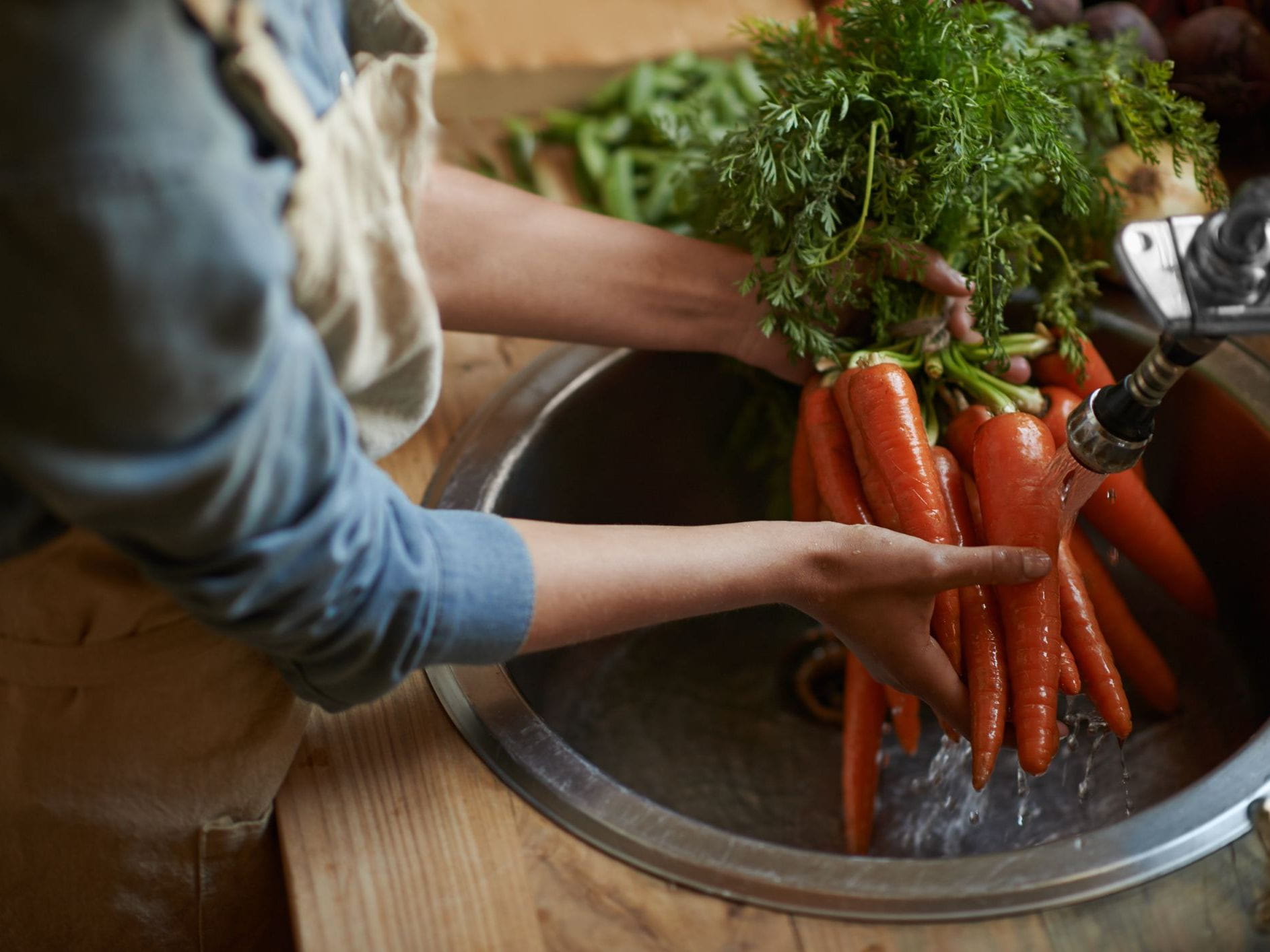Campylobacter food poisoning: Don’t risk it

The Bottom Line
Campylobacter is one of the most common causes of bacterial diarrhea. The illness is campylobacteriosis. Symptoms include diarrhea, fever, abdominal cramps and pain. Campylobacter is found on raw vegetables, dairy products, poultry, and meat. It is also in the stool of contaminated people and animals. Treatment is mostly supportive; stay hydrated. If severe, antibiotics may be indicated.

What is campylobacter?
Campylobacter is a gram-negative bacterium that is spiral or curved shaped. The most common species are C. jejuni and C. coli. It is one of the most common causes of diarrhea and the illness is called campylobacteriosis.How do you get campylobacter?
Campylobacter is found on raw vegetables, raw dairy products, and raw or under cooked poultry and meat. It is also in contaminated water. Another route of transmission is fecal-oral (i.e., ingesting something that is contaminated with feces from an infected person). Proper handwashing should minimize the risk of fecal-oral transmission.What is the campylobacter incubation period?
The incubation period is 1-7 days, with an average of 3 days. It usually takes 5 to 6 days until recovery.What are the symptoms of campylobacter?
The most common symptom is diarrhea which can be bloody. Other symptoms include abdominal cramps, pain and fever. Nausea, vomiting, headaches, excessive gas and tiredness can also occur.Campylobacter treatment: Can I take antibiotics for campylobacter?
Most people have mild diarrhea and recover within a few days without antibiotics. However, if symptoms are severe (e.g., significant abdominal pain, bloody stools, high fever) or prolonged, then antibiotics may be used. Antibiotics are also sometimes recommended in older adults or people with immune system compromise. If antibiotics are indicated, azithromycin is usually prescribed in the U.S. Do not take antimotility drugs since they can trap the bacteria in the body and make symptoms worse.Does campylobacter stay in your system? What are the long-term effects of campylobacter?
Yes, it can stay in your system, leading to complications. Campylobacter can cause Guillain-Barre syndrome. It may also cause arthritis and irritable bowel syndrome.How to prevent campylobacter: Is campylobacter contagious?
Yes, campylobacter is contagious which means you can get it from another person or an animal. Person-to-person spread is possible but not common. If the infected person doesn’t wash their hands after using the toilet or if you are in contact with another person’s feces, you can become infected. It is also possible to develop a Campylobacter infection from contact with infected pet feces. People who work with animals are at risk, especially those who work with birds or poultry. Campylobacter is heat labile, meaning that heating food will kill the bacteria. You can prevent campylobacter by cooking food thoroughly, pasteurizing milk, and chlorinating water.What should I do if I contract campylobacter?
It is important to stay hydrated. Drink extra fluids while you have diarrhea. If your symptoms are severe, contact your doctor. You may need intravenous fluid and electrolyte replacement. Help from experts is available through the webPOISONCONTROL online tool and by phone at 1-800-222-1222. Poison Control’s expert guidance is always free, confidential, and available 24 hours a day.Clinical Toxicologist
Poisoned?
Call 1-800-222-1222 or
Prevention Tips
- Wash hands after using the toilet or changing a diaper.
- Wash hands after contact with pet feces.
- Wash hands after handling raw meat and poultry.
- Wash hands with soap and water.
- Use separate cutting bords and utensils for raw foods.
- Wash fruits and vegetables thoroughly.
- Prepare food properly so that it is not undercooked or raw. For example, cook poultry to an internal temperature of 165 degrees F.
- Clean possibly contaminated surfaces such countertops and sink with soap and water after food preparation.
- Avoid unpasteurized milk.
- Avoid water and ice cubes if water quality is questionable. Use bottled water.
- Do not drink untreated water from streams, rivers or lakes.
This Really Happened
A 24-year-old man developed bloody diarrhea, abdominal cramps and fever approximately 4 hours after eating undercooked chicken. He also had nausea, vomiting, and headache. The next day he complained of worsening abdominal pain without symptom improvement. He contacted Poison Control for advice. Based on history and symptoms, Poison Control suspected Campylobacteriosis. Since he had both vomiting and diarrhea, it was difficult for him to drink extra fluids to maintain hydration. He was referred for medical evaluation and intravenous hydration. Examination of diarrhea showed gross blood and leukocytes (i.e., white blood cells). Rapid diagnostic testing was positive for Campylobacter. He was treated with intravenous fluids and antibiotics. Symptoms were resolved over the next few days, and he was discharged from the hospital.For More Information
References
Poisoned?
Call 1-800-222-1222 or
Prevention Tips
- Wash hands after using the toilet or changing a diaper.
- Wash hands after contact with pet feces.
- Wash hands after handling raw meat and poultry.
- Wash hands with soap and water.
- Use separate cutting bords and utensils for raw foods.
- Wash fruits and vegetables thoroughly.
- Prepare food properly so that it is not undercooked or raw. For example, cook poultry to an internal temperature of 165 degrees F.
- Clean possibly contaminated surfaces such countertops and sink with soap and water after food preparation.
- Avoid unpasteurized milk.
- Avoid water and ice cubes if water quality is questionable. Use bottled water.
- Do not drink untreated water from streams, rivers or lakes.
